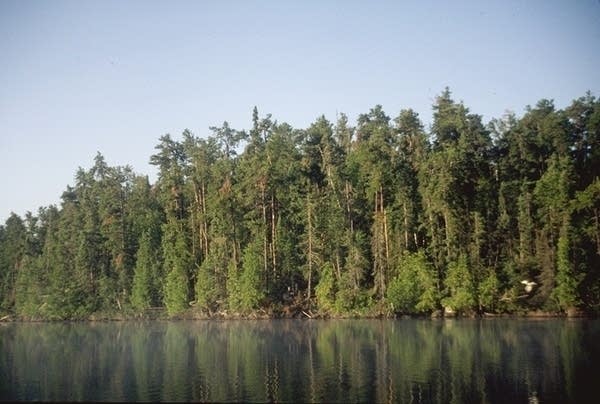New study makes dire prediction for Minnesota forests

A new article by University of Minnesota ecologists says Minnesota's forests could shrink more rapidly than expected, as droughts, fires, and growth of native and exotic species accelerate the changes caused by global warming.
The authors argue that prairie lands could expand by as much as 300 miles in the next 50 to 100 years, pushing Minnesota's forests further north. The changes would significantly alter the state's landscape, and could impact industry and development.
"We should be alarmed at the rate of change," Lee Frelich, the director of the University's Center for Hardwood Ecology and the article's co-author, told Minnesota Public Radio News on Monday.
Frelich said that although forest and prairie lands have shifted in the past, those changes occurred over a longer period of time.
Create a More Connected Minnesota
MPR News is your trusted resource for the news you need. With your support, MPR News brings accessible, courageous journalism and authentic conversation to everyone - free of paywalls and barriers. Your gift makes a difference.
"We're causing an extraordinarily rapid rate of climate change, maybe at a rate faster than that at which the forest can respond," Frelich said. "And so maybe we'll see large areas of forests just simply die because they won't be able to move north that fast."
Droughts, fires, and windstorms caused by global warming could kill older trees, and contribute to what the article calls "a savannification" of the forest, the article argues.
"Trees live a long time," Frelich said. "They cannot change as fast as something like birds that can just fly a little further to the north in a few hours time. Trees can't do that, and so they need a longer time to adapt."

Native and non-native species will also affect the ability of trees to reproduce, the article claims. Invasion by European earthworms has increased soil temperature, compounding effects from global warming, Frelich said. As the composition of forest soil changes, seedlings will struggle to survive.
The increasing population of native white-tailed deer also poses a threat to certain species of young trees. During the winter months, when food is scarce, white-tailed deer eat seedlings of northern white cedar, yellow birch, red oak and white pine trees.
Frelich said that the threat posed by the increased white-tailed deer population is particularly troublesome, as the tree species preferred by the deer are those that could best adapt to a warmer climate.
"Unfortunately, just that group of four species would be species of trees that might still do well in Minnesota in a warmer climate," he said. "But it just so happens that they're susceptible to deer."
Frelich urged lawmakers, forest management officials, and the public to address the possibility of rapid deforestation.
"People tend to think about where their food is going to come from for tomorrow, and they think on time frames of a few years," he said. "It's really hard to get people to think on a time scale of 50 to 100 years, even though from the point of view of the forests, forests live on a scale of tens of thousands or hundreds of thousands of years. And a century is nothing for them, but it's a big deal to people."
The article, co-authored by University professor Peter Reich, was published in the journal Frontiers in Ecology and the Environment.

